One of the top questions we get asked on our sales calls is “how long does content marketing take to work?”
Most people have probably read answers online, or heard from agencies or in-house marketers something like: “it takes 3 months, 6 months or even a year before content marketing will work.”
The truth is: you shouldn’t listen to some random figure that anyone gives you. The answer depends on what you measure success by, your business/business model, and if you have product/market fit.
There’s even more variability when you consider differences in domain authority, SEO competitiveness in different industries, promotion channels unique to certain niches, fame and following of founders or key executives, and other specifics.
That being said, in this post we’ll attempt to shed light on this question (”How long does it take before you start seeing results from your content marketing efforts?”) by showing you real data from our client engagements.
We’ll explain how we got these results and also share why, for certain companies, we think we can get results faster than almost any other options out there.
Curious about having us do content marketing for your business? You can learn more here.
If you’d like to learn our content marketing strategy, we teach our process in our course and community.
But first…
Your Metrics for Success Will Determine When You Start Seeing Results from Content Marketing
One reason why I think people blurt out random answers to the question “how long does it take to see success from content marketing” is because everyone has a different definition of success.
What does “content marketing is working” mean to you?
- A blog post ranking #1 for a keyword in multiple search engines?
- A click-through to another page on the blog? (We recently had a company tell us this was their measure of success for their blog)
- Organic traffic growth?
- High time on site?
- People sharing your post on social media?
- Blog engagement (ie. people commenting)?
- A 15% growth month-over-month when you start from 0? (Hint: this would take a long time before you started to see results.)
- When “you feel” like it’s working?
While some of these metrics might indicate that things are moving in the right direction, most of them are vanity metrics. For us, results from content marketing means only two things: leads/signups and traffic growth (in that order).
Why do we only care about leads and website traffic? The answer is because:
- Leads: If you’re not getting conversions from content marketing, it doesn’t make sense to invest in it.
- Traffic: Measuring conversions is hard and only gives you a lower limit of the total conversions generated from content marketing, so also measuring traffic helps complete the picture. Without traffic, you won’t get conversions.
We believe that while there are a lot of other definitions of “success” from content marketing, those two metrics are the only ones that matter.
The Method We Use to Attribute Leads to Content Marketing
Whenever we say we measure success by conversion (lead/signup) growth, especially as an agency, we always get the question, “How do you measure that? Attribution is so hard from content marketing.”
That’s true, it’s no perfect science (hence we’ve written 3 separate articles on this topic, all linked to below). We had the same attribution challenges when we first started our agency, but we also felt like telling clients “some fraction of the traffic you generate should be converting” wasn’t a good enough answer to the question: “what’s the ROI on your content marketing service?”
So we set out to find a better way of attributing leads — and we found a method that can report on both first click and last click conversions within GA.
We first set up goals in Google Analytics to the main conversion action that the company wants a user to take. This is typically:
- Free trial signup, signup, request a demo (for SaaS)
- Talk to a salesperson request form (for services)
We believe that you can get directly attributable signups from content marketing (we’ll show you why with real client data below). We also believe that the email signup to lead nurturing approach that many HubSpot and inbound marketing agencies use usually lead to lower conversion rates and worse results (mainly because you have to convert people multiple times — once to an email subscriber, then to open an email, then to click through, then finally to your conversion goal).
We wrote an entire article explaining the math behind direct conversions vs. nurturing conversion strategy.
Then we use the model comparison tool inside of Google Analytics to measure first click and last click conversions from content marketing. By using the model comparison tool, we’re able to see which URLs brought in what conversions, so we can see which pieces drive the majority of the conversions and optimize our strategy as we learn what works for a particular client.
We measure by both first click and last click conversions because first click tells us that a user’s first touch point with the brand was one of our blog posts (then they converted at a later point in time). Last click tells us that the conversion happened directly after reading a blog post (note: most people exclusively measure via last click, if they can measure conversions at all, because most GA default reports do this).
Together, measuring first and last click give us a much better picture of conversions than just last click, but a few months back, one of our readers (Ryan Walters) taught us another useful model for attributing leads to content. Using GA’s segments feature, you can create a segment that says “show me data for all users who converted who saw a blog post at any point in their journey”:

The “Any user interaction” dropdown can be used to switch between “first user interaction” and “any” as you see above. First interaction will essentially give you first click attribution numbers, but “any” is interesting because it let’s see you see how many conversions were influenced by the blog — in that the user saw a blog post at any point in their journey to converting. We’ve been calling this “any click conversions” internally.
Together, these three ways of measuring conversions, give us a ton of confidence that we (and our clients) have a solid, holistic picture of how our blog posts are directly leading to or influencing conversions.
Lastly, note that we don’t ever ask the question “which model is right?”. The models don’t “fight” with each other, they are just different ways of looking at content’s influence on lead generation or conversions.
So now that you understand how and what we measure success by, let’s dive into some real client examples to help answer the question: “How long does it take for content marketing to start working?”
If you’d like to learn how to attribute leads to content with video examples, we also share this process and more, in our course and community.
Here Are Some Content Marketing Results from the Beginning Months of a Few Client Engagements
In the beginning of our agency, we had the hypothesis that we should start off a new account by focusing on top of funnel content that generated links and then come back around to focus on the bottom of the funnel content once we had built some authority.
This is still a good strategy if you’re starting from scratch and doing content marketing for a brand new blog or website.
However, since most of the companies we work with have domain authorities ranging between 25-60+, we believe starting on bottom of the funnel (long-tail high conversion intent) content gets results faster.
We’ll describe the exact approach we took for each client below.
Content Marketing Results for a VC-Backed Subscription Business Whose Target Audience is Startups and Small Businesses (with a $500/Month Sub Price Point)
The Strategy
When we started working with this company, we realized there was search volume around comparing this company to competitors and there wasn’t a post or a page on their site objectively explaining the difference between them.
We also realized they hadn’t created a blog post that discussed various options consumers had in their product category.
Taking a page out of our pain-point SEO strategy post, we decided that the first few blog posts that we should create are a comparison post (very “bottom of funnel”), a post that targeted category search terms (also “middle to bottom of funnel”), and a couple of posts that went after product use cases (we define this as “mid-funnel” but some may call it “bottom”). We also decided to create a story that outlined the founder’s vision for why he started the company and the problem he was trying to solve in the market (we’ve found that these typically do well from a promotion standpoint).
So overall, we can say our strategy for this subscription business was skewed towards bottom of funnel, with some mid-funnel pieces thrown in. We haven’t done any real top of funnel (little conversion intent, high traffic potential) posts for them. They sell a known service with existing demand — they aren’t creating a new product category, so there is plenty of search volume for higher intent keywords. The top of funnel strategy would make more sense if there was heavy education needed about the category or service they’re in, and we had exhausted most of the bottom/middle of funnel SEO terms.
The Content Promotion Tactics
We take a three-pronged approach to content promotion. We focus on Facebook advertising and community content promotion for short term traffic. Then we focus on link building to our pieces for long-term traffic.
On the Facebook side, we typically create 3 separate audiences.
- One that goes after cold traffic — we back into who to target based on the data we get from our customer research session at the beginning of an engagement with a company.
- We create a lookalike audience that goes after traffic that looks like the audiences that have already converted to a product signup.
- Then we also do straight retargeting.
This has been our primary source of short term traffic, since as I outlined in this post, community content promotion is getting harder. That being said, we also found some communities to share content in.
For long term promotion (some call it “content distribution”), we focus on SEO and use active link building to do this strategically. First, we optimize a post around the keyword we’re targeting, wait to see where it ends up in the SERPs organically without link building, and then prioritize articles for link building that have high-conversion potential and could use a couple of links to boost the results to page 1 or 2.
Using this combined approach, you’ll see in the first few months of working with this company, we were able to start driving thousands of visitors to their blog within the first 2 months.
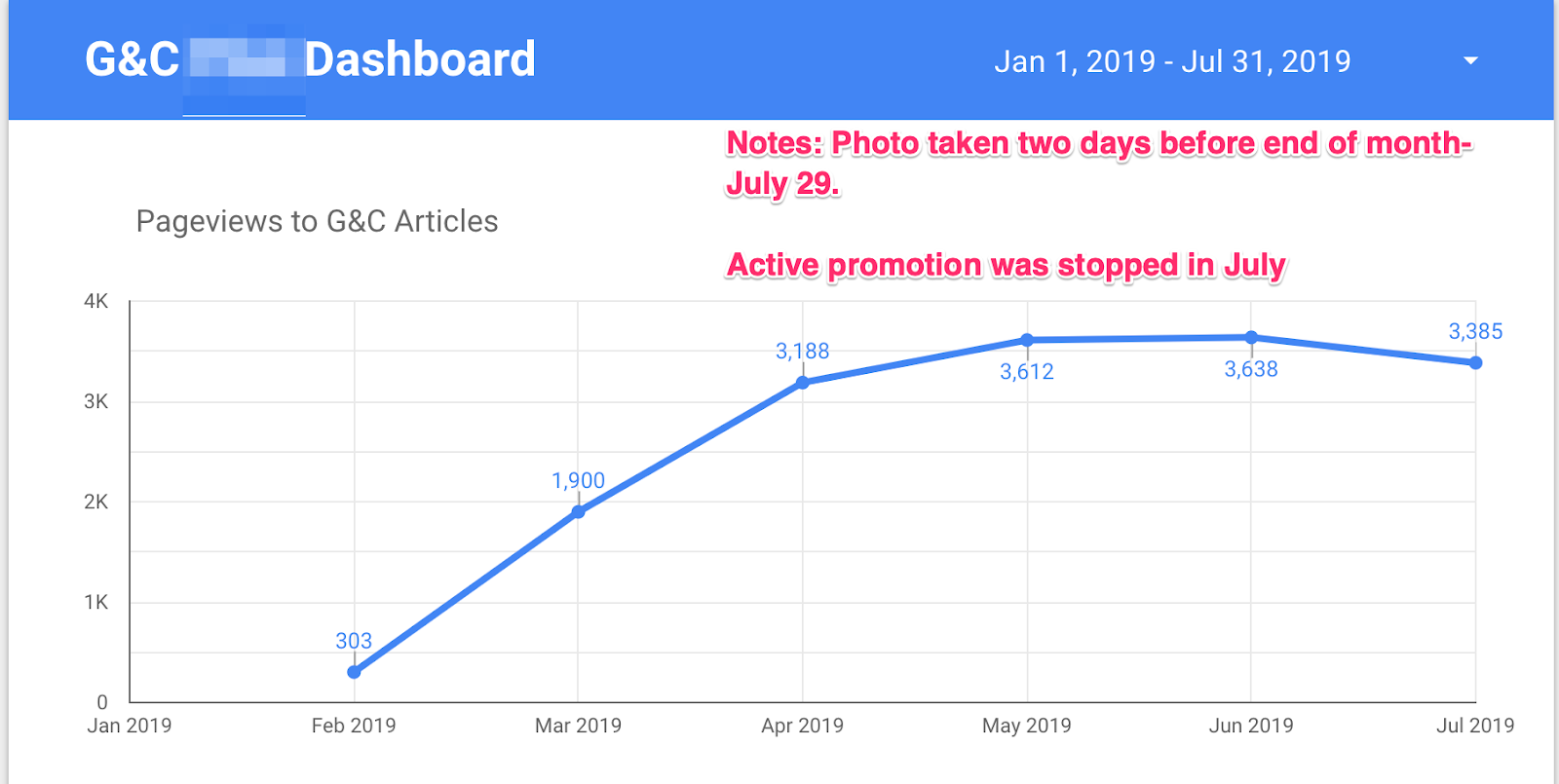
The traffic then starts leveling off around 3,500 pageviews a month because, like we said above, we focused on conversion-intent, bottom of funnel content that’s not highly shareable, traffic driving content. Even our keyword driven posts were prioritized on the conversion-intent of search queries, not search volume (see our Pain Point SEO article linked to above, or this one on content ideation for more on this technique).
So what about conversions?
As you can see from our Google Data studio dashboard below, we started seeing signups come from our blog posts in the first month of working with this client. Typically it takes longer to start seeing conversions, but this told us that our conversion-centric strategy was on the right track.
In the very beginning, most of the signups will come from paid or social, and then the longer that we work with a company, the sources typically change to almost completely organic conversions as we focus more and more on pain-point SEO.
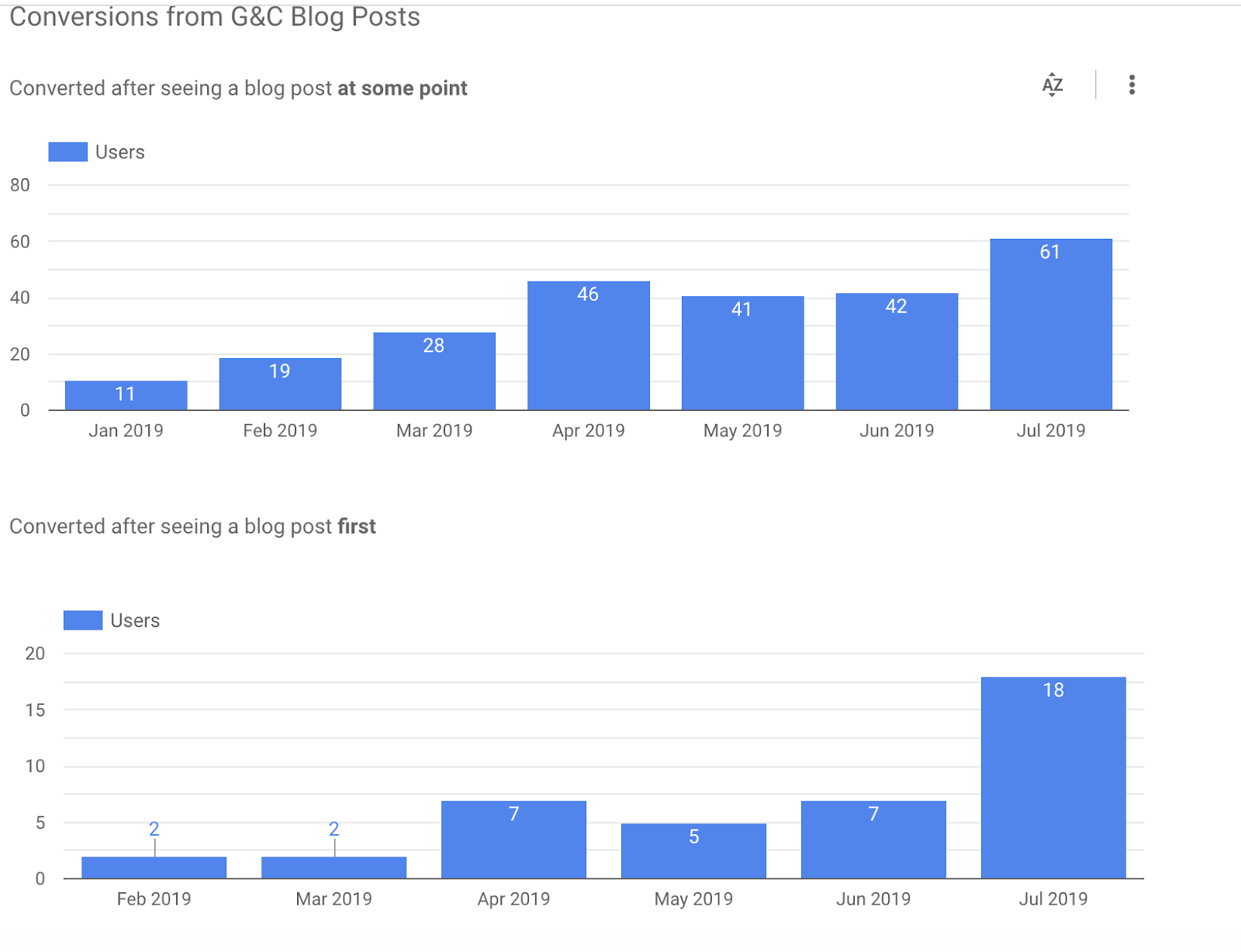
Month 1 Conversion Sources:
As I mentioned above, you won’t typically see conversions within the first month, or it’ll start slowly with conversions coming from paid or community promotion.
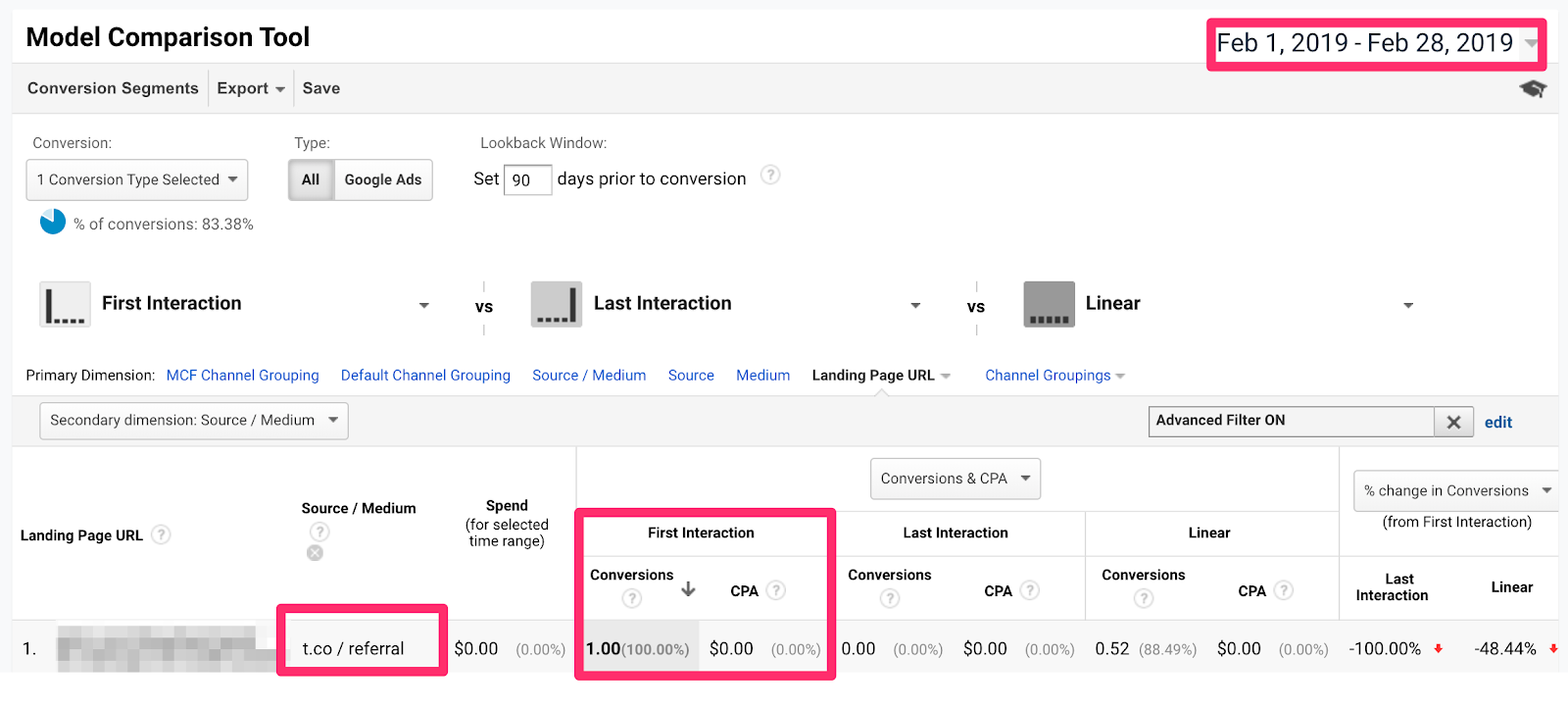
Month 2 Conversion Sources:
In month 2, we were surprised to see that our comparison post that we created already yielded a conversion from organic.
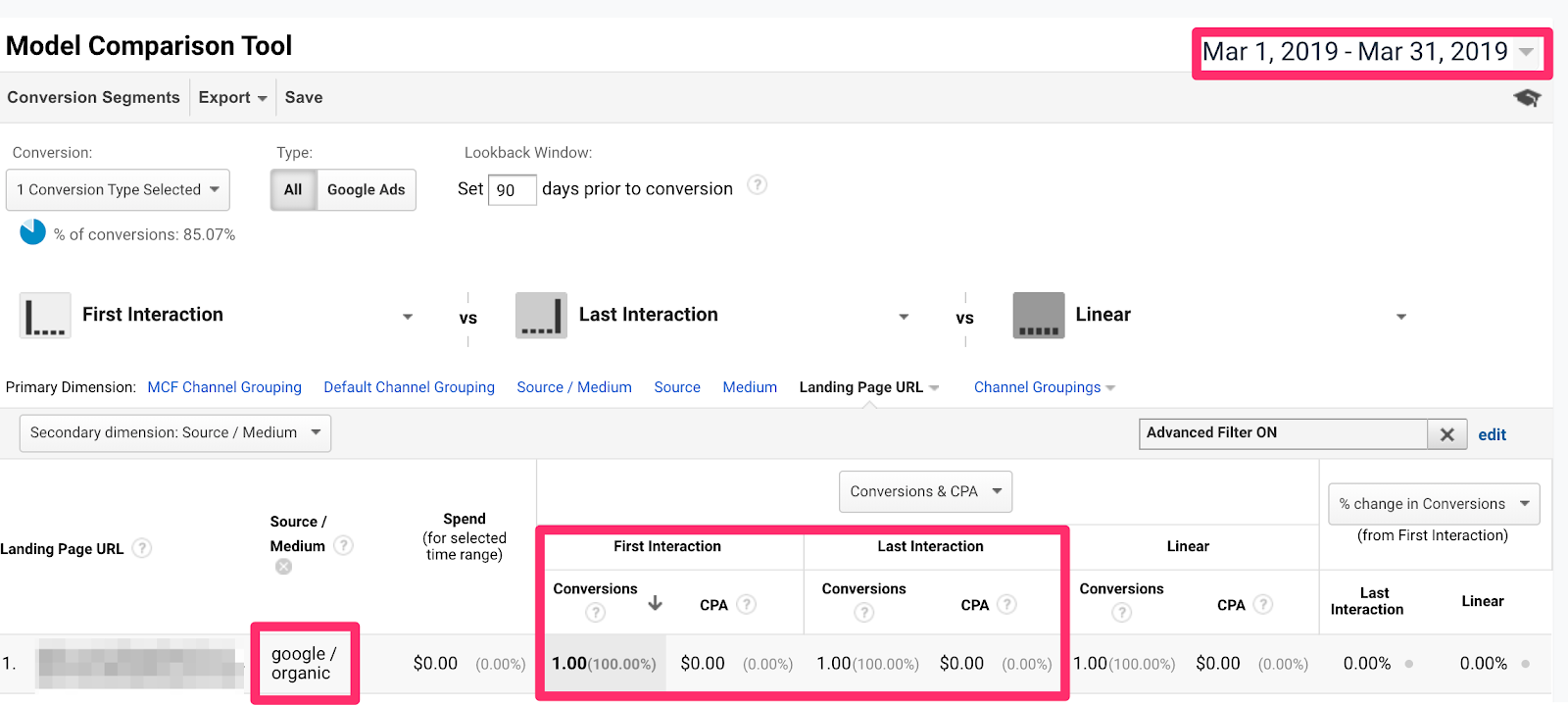
Month 5 Content Conversions:
By month 5, you start to see a lot of the sources of traffic diversify. (Note: The company also decided to start testing other forms of promotion such as Reddit ads — beyond what we were doing. But I wanted to point out that now you start to see an increase in organic conversion volume due to us starting to rank for the keywords that we went after via pain-point SEO.)
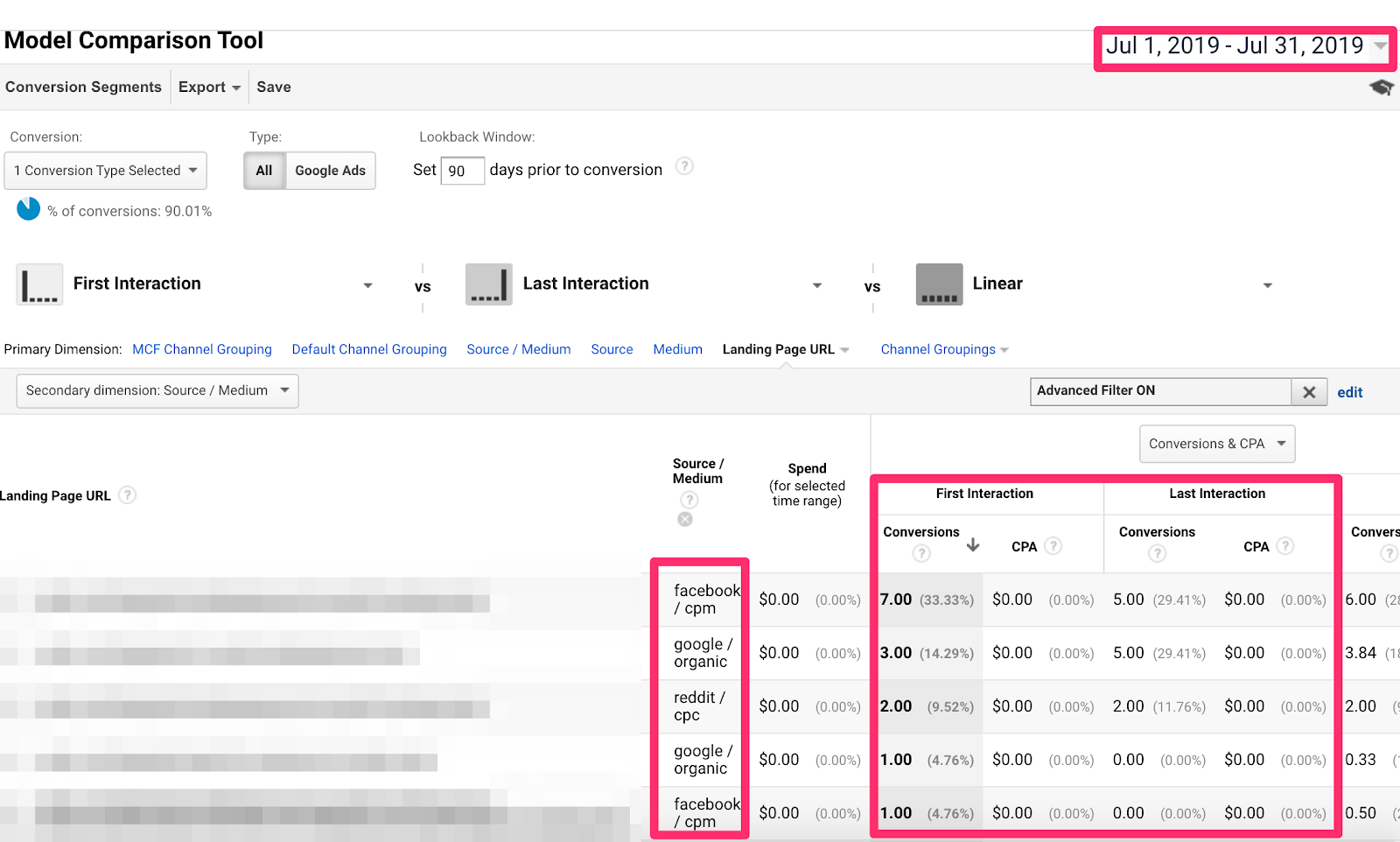
Content Marketing Results for a B2C Concussion Treatment Center with a Physical Location
The Content Marketing Strategy
When we started doing content marketing with this company, we knew this was going to be an uphill battle from an SEO perspective. The sites ranking for a lot of the keywords that we needed to target were large content sites like WebMD, Healthline, MayoClinic, etc., with domain authorities of nearly double what our client had.
We decided to take a two-pronged approach for this company. We decided to create case studies that showed the value someone received from getting treatment (these stories would be perfect on Facebook and for short term traffic — again, we call these “mid-funnel” — yes they are product related, but they aren’t targeting a keyword with buying intent, or any keyword at all typically), then we were going to go after longer-tail, high conversion intent keywords that were easier to rank for to gain long-term traffic (mid-bottom of funnel).
Once we had exhausted a lot of the longer-tail high intent keywords, we’d use those pages to link back to some of the head keywords that we were targeting that were more competitive keywords.
The Content Promotion Strategy
We decided to start testing some of the case studies on Facebook with some cold audiences around headaches, brain fitness, cognitive science, etc. Simultaneously, we published some of the keyword focused content and started building backlinks to it to see where it would sit in the search rankings.
To our (pleasant) surprise, the stories on Facebook started taking off and had super high engagement, click-through, and share rates — so we decided to double down on the case study strategy as a way to drive short term results while we were waiting for some of the SEO pieces to start ranking for various keywords that we were targeting.
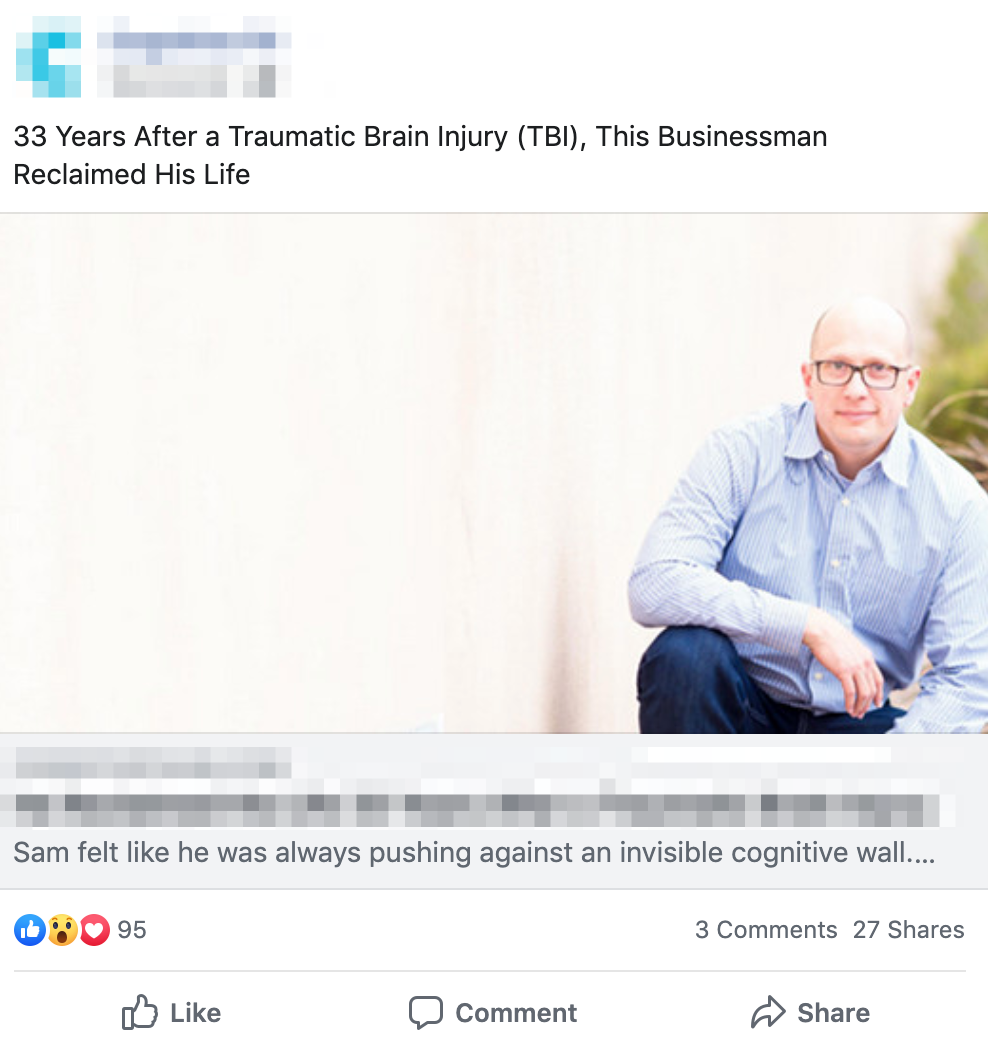
We also decided to start testing advertising some of the keyword-focused pieces on Facebook to see how those would perform. To our surprise, those pieces took off, too, and were shared sometimes over 90 times.
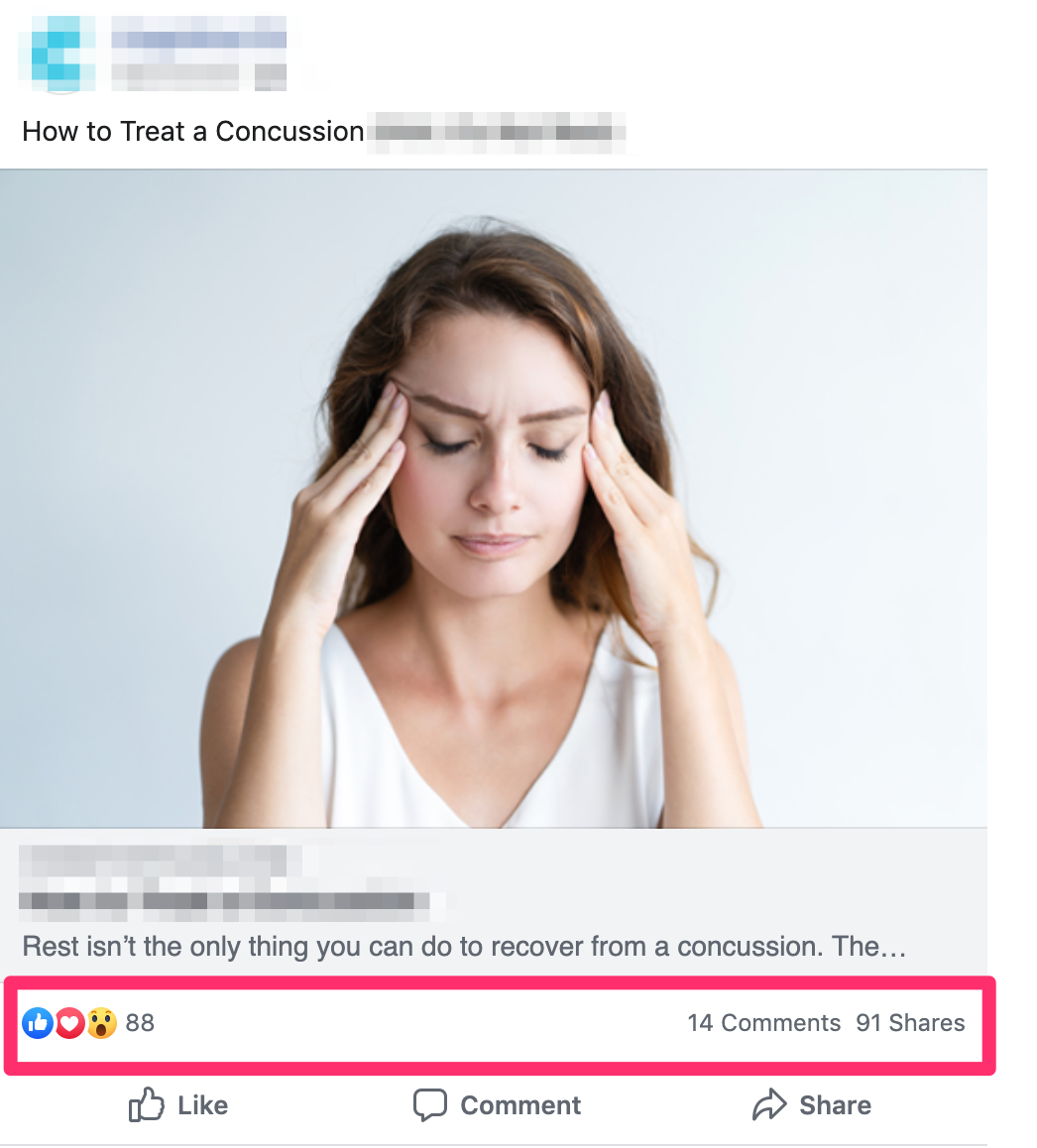
This strategy helped drive an initial surge of traffic for our client while we waited for SEO traffic to start gaining steam.
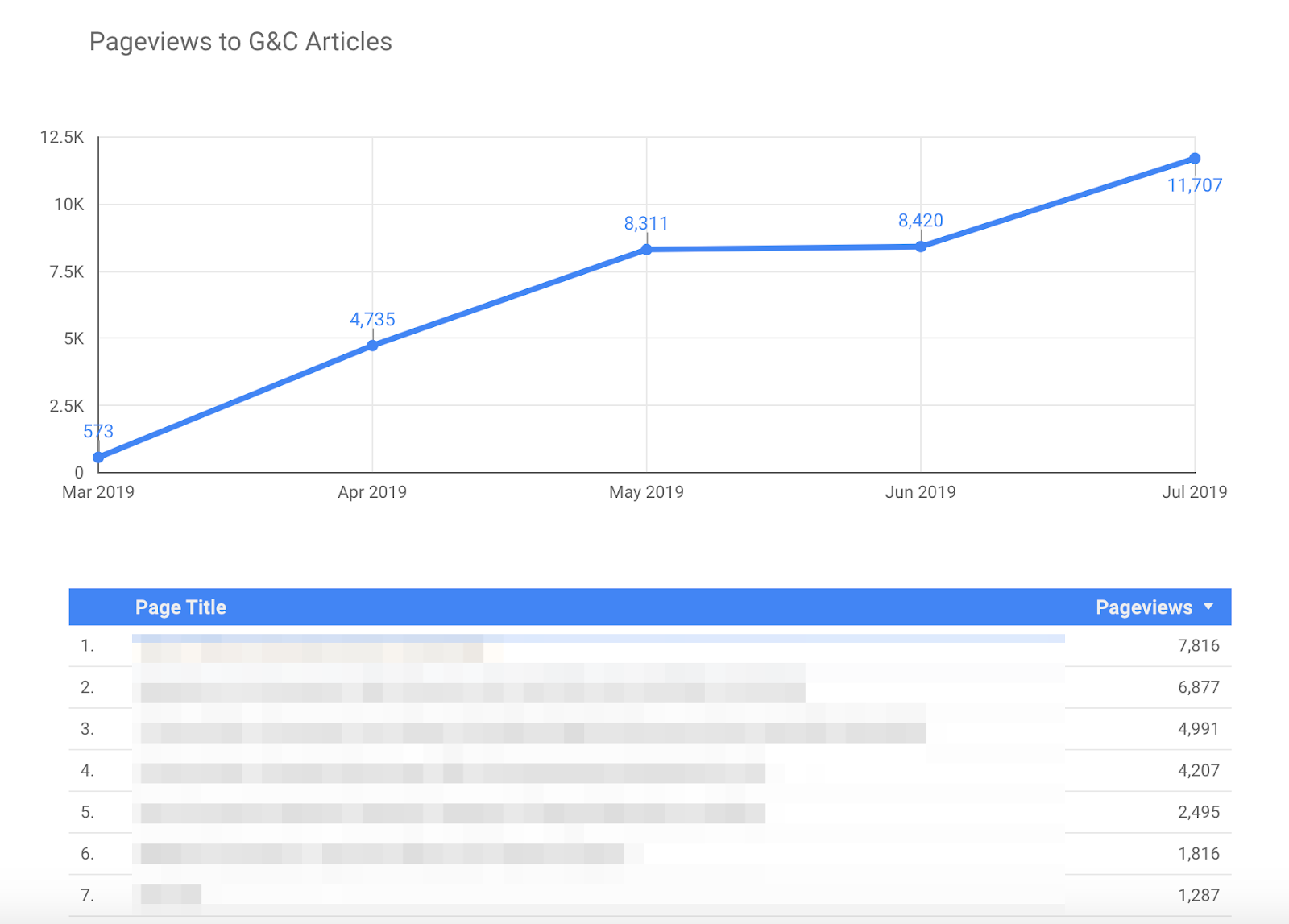
Look at the difference in pageviews for this client versus the first one above. (Note: all of these graphs are showing pageviews to our articles only, not the overall blog, so they’re all starting from scratch with ‘0’ pageviews.)
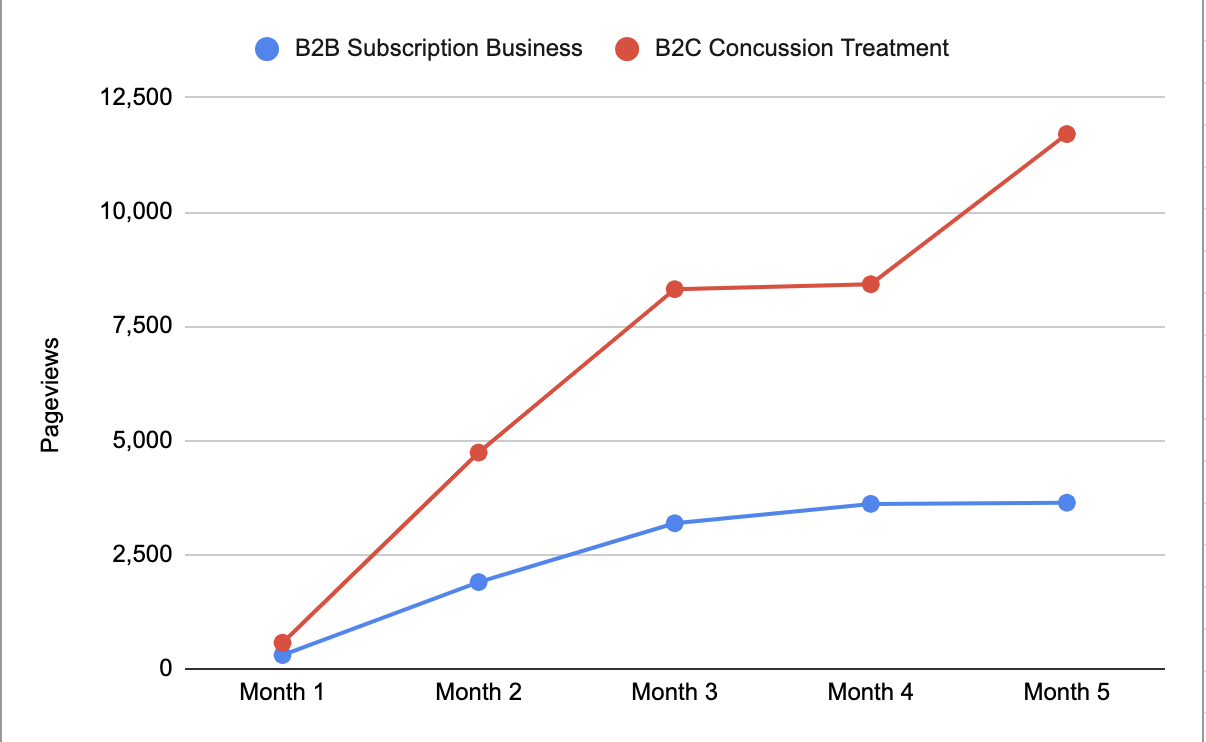
This is why it’s so difficult for us to answer the question: “When can we expect results from content marketing?”
As I mentioned above, “results” is ambiguous, it means different things to different companies. But even if you use a single metric like “traffic” to compare, it’s hard to say a priori how much you can expect.
Yes — there are some general trends. For example, B2C in general can get more traffic than B2B. But you can’t predict how much traffic you’ll get before starting. We couldn’t have predicted the concussion treatment center would have yielded over 8,000 visitors per month on a handful of articles in just month
Remember: It’s the strategy that’s important, not setting arbitrary traffic goals.
Organic Traffic Growth
Since we knew that we were competing with larger health content based sites, the approach we took was to go after long-tail high intent keywords right from the beginning. We needed to produce content that was extremely detailed, structured properly, and thorough enough to outrank the other pieces of content.
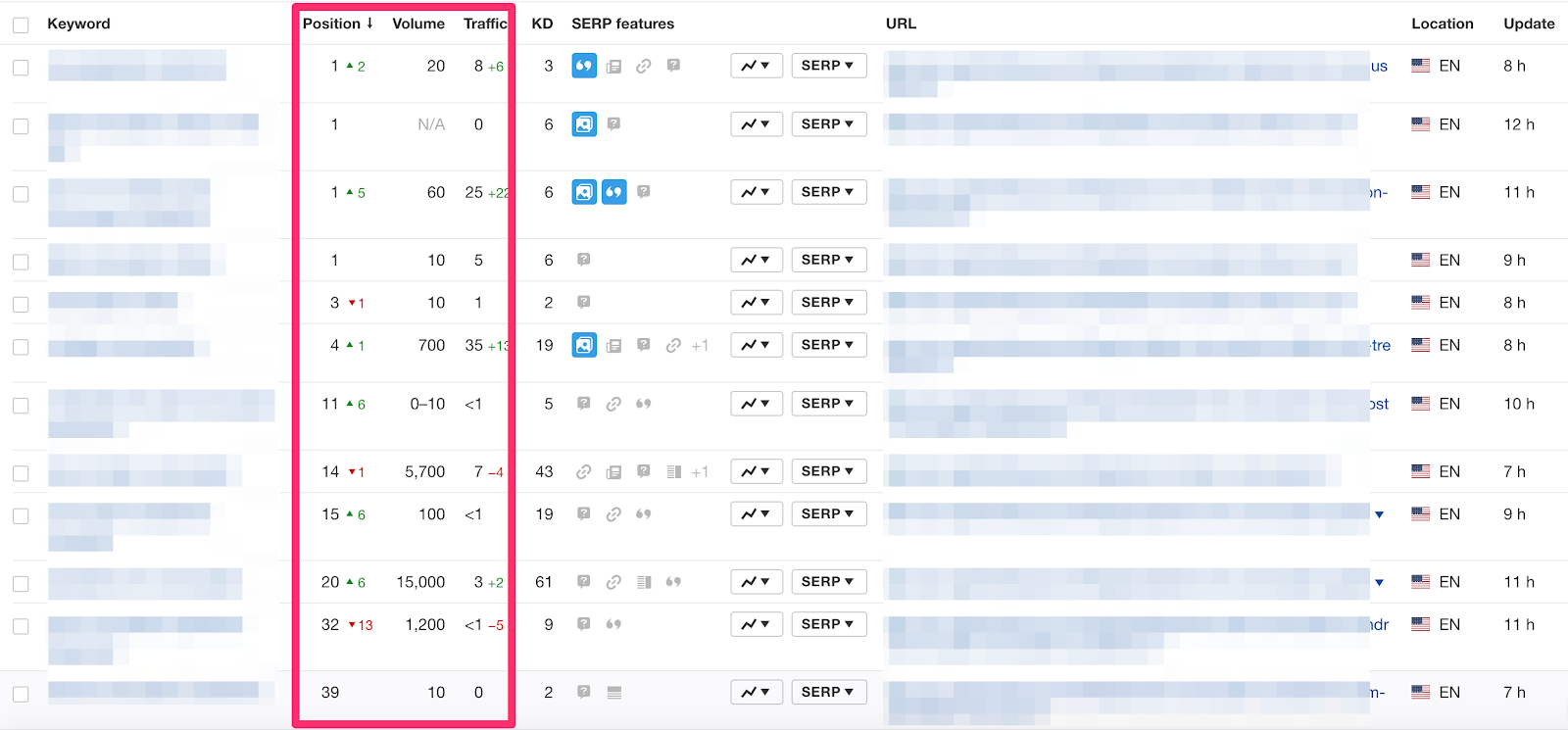
As you can see from the Ahrefs screenshot, we started ranking within the first 5 or so months for multiple keyword variations on the first page for the low-volume, high intent keywords. As of this writing, for some of the harder keywords we’ve been targeting, we’re starting to gain traction in getting those pages on page 1 or 2 for various keyword variations as well.
The result? Organic traffic started growing quickly using this approach and we’re targeting the harder pages for link building efforts over the next few months — which should help those pages eventually reach page 1 of the SERPs and thus drive tons of qualified traffic to those pages.
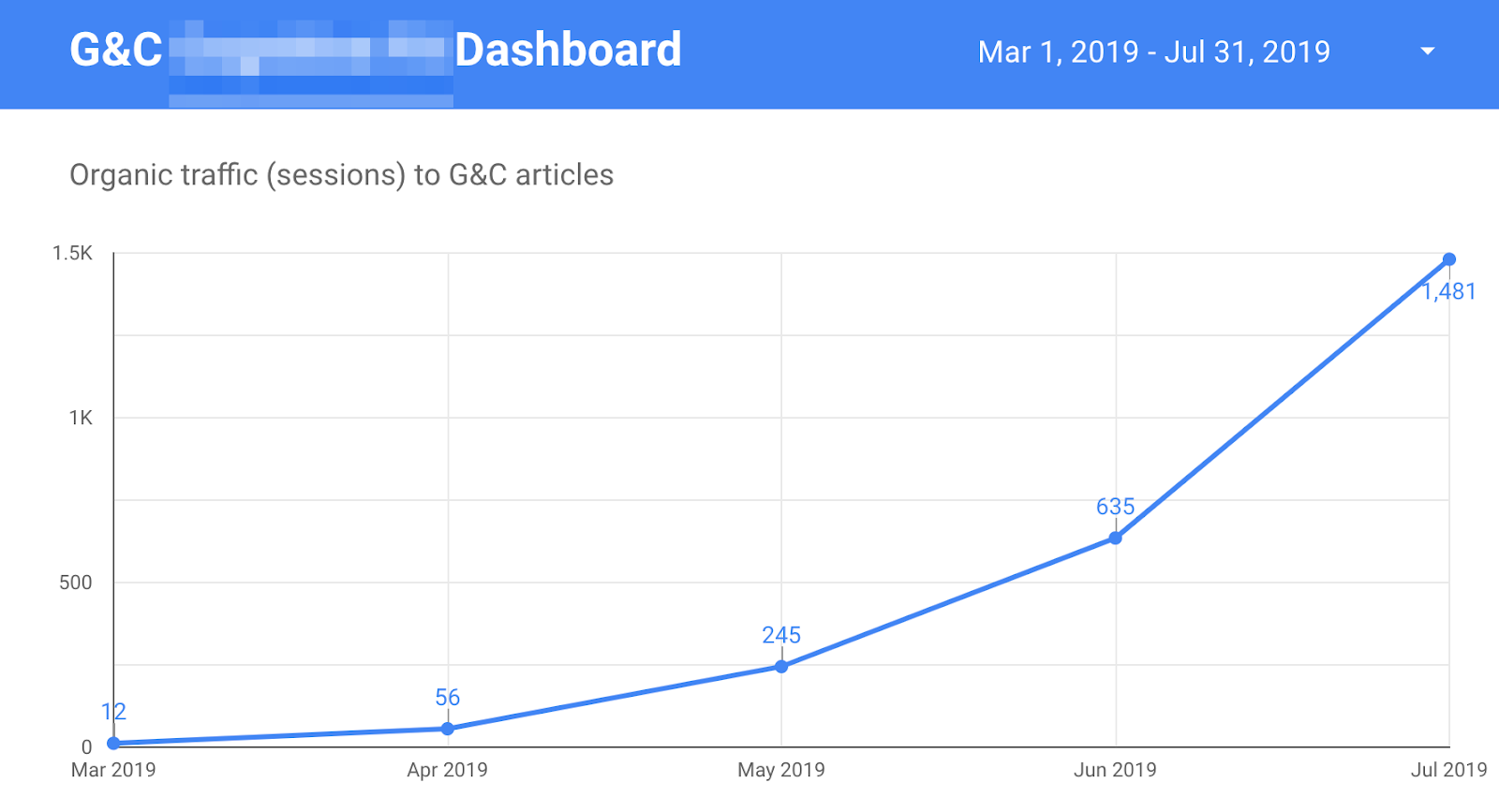
From a Conversion Standpoint
Being this is a services company, the main CTA is a form to have a consultation with a doctor at the clinic. In month 2, we started seeing conversions from our Facebook ads as well from the stories being shared on other social channels.
Even though the sources of traffic say direct/none on a couple of the URLs, we can see that those leads originated from Facebook due to the FBclid which is appended to the URL.
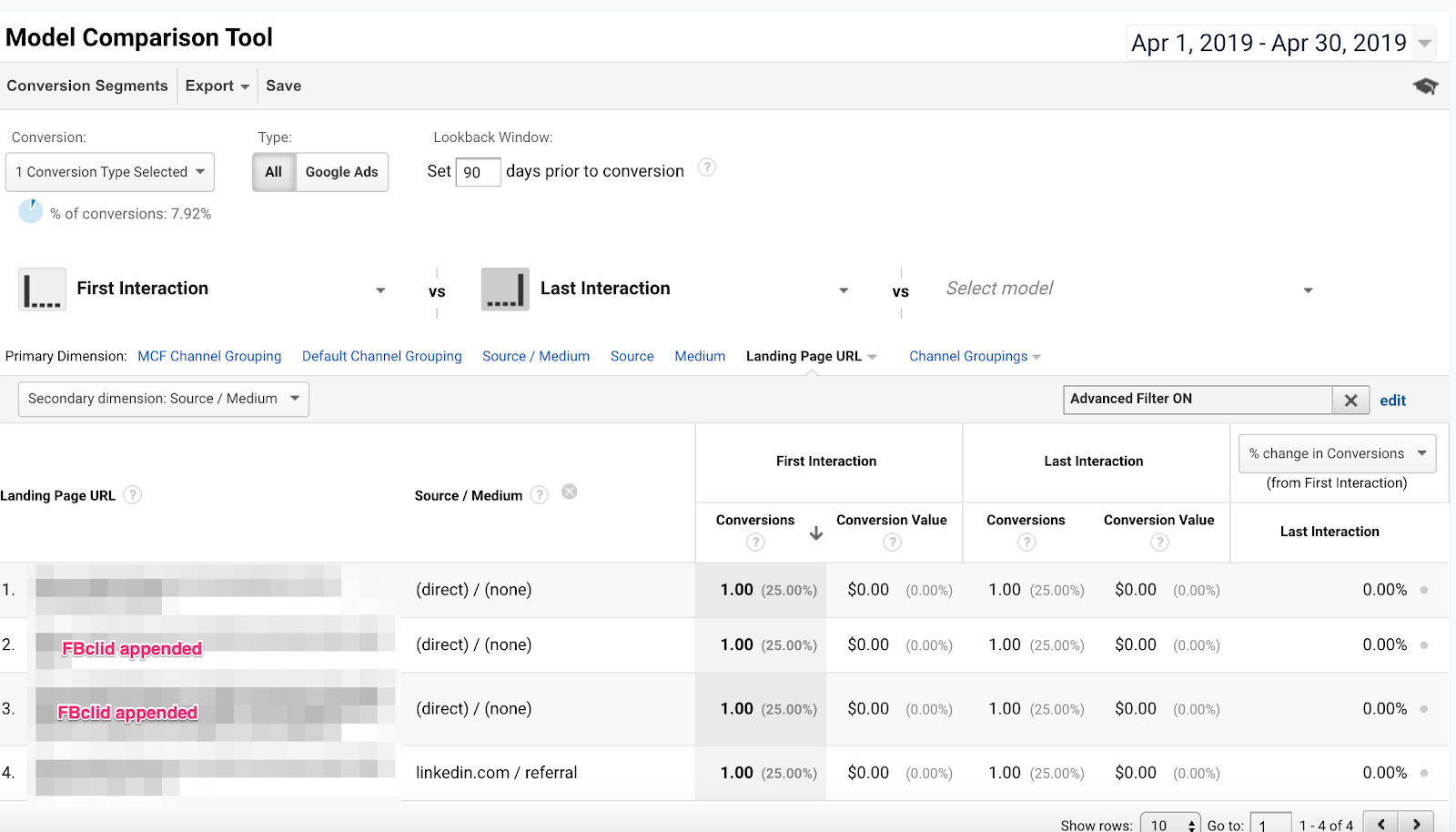
In month 3 of doing content marketing, the volume of signups for this company started to pick up from all of our paid efforts.
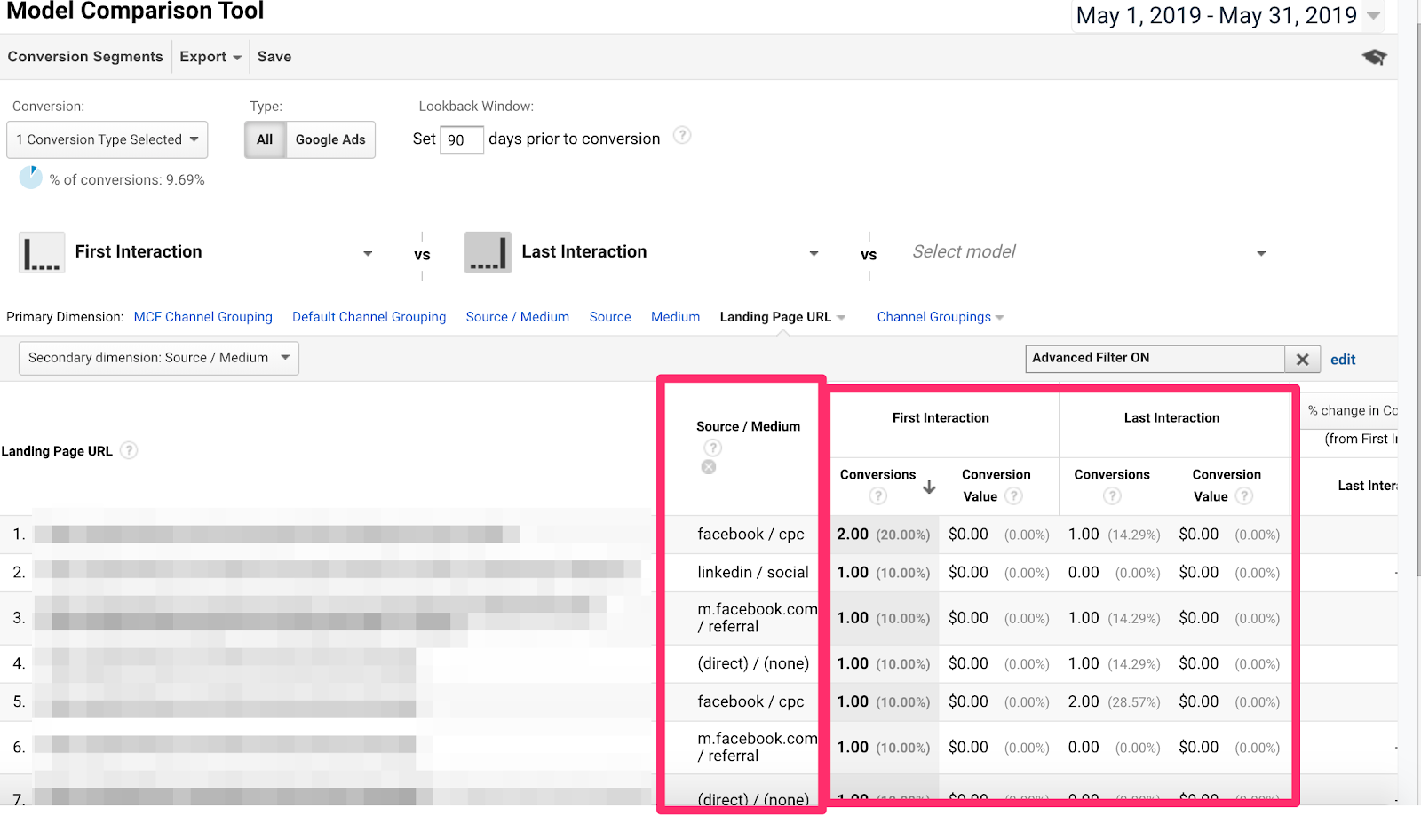
Now at month 5, we’re starting to see a lot of our organic efforts pay off.
This is why we think it’s important to have a multi-pronged approach to both content strategy and promotion. If we only focused on SEO content from the very beginning, it would’ve taken us 5 months to start seeing any conversions result from our efforts. If we only focused on case studies and paid promotion, we would’ve seen an initial influx in traffic and signups, however you’d hit a ceiling both in terms of traffic and leads — unless you kept increasing budget.

With our approach of focusing on multiple content frameworks and multiple content promotion tactics, we’re able to see growth from the beginning that scales over time.
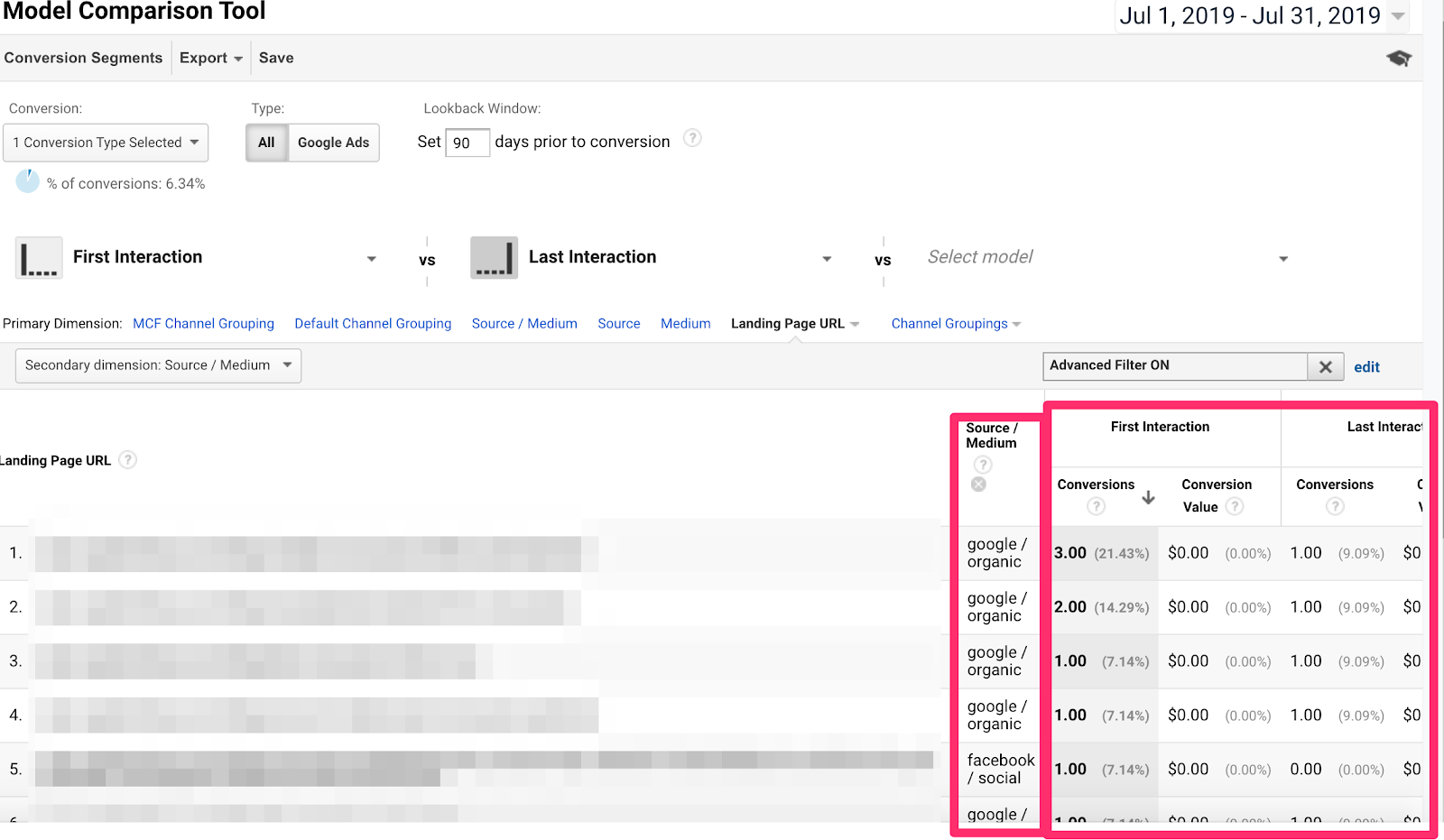
Content Marketing Results for a B2B SaaS Company That Sells to Marketers and Salespeople
Now that we’ve shown the strategy and approach from two newer clients. I want to share how we’ve approached content marketing with one of our clients that’s been with us for nearly 2 years.
The Content Marketing Strategy
As I mentioned in the first case study, our content marketing strategy has changed a ton since we first started our content marketing agency. As we continue to work with different companies, we test things and scale what works. When we started working with this company, we focused almost exclusively on top of funnel content creation as a way to drive traffic and “thought leadership.”
However, about 5 months in, we had created a couple of blog posts that were along the lines of our pain-point SEO strategies and those posts outperformed all others on the site from a conversions standpoint. So, we decided to double down on that approach because the main goal for this client was to increase the signups per month that they were receiving from the blog.
The Promotion Strategy
When we started working with this company, our main promotion tactic that we used was community content promotion. As you can see from our traffic graph, it worked well in combination with the top of funnel content we were producing. However, about 5-6 months into working with this company, we started to hit a traffic ceiling so we had to switch our approach.
Around March of 2018 is when we started making the switch to focus on more pain-point SEO content based on the couple of wins we had when testing that approach. We doubled down on that SEO strategy, continued to share content in communities, and started testing FB promotion as well to try to increase traffic over time.
Now, almost all of the traffic comes from our pain-point SEO strategy. First, here’s total pageviews:
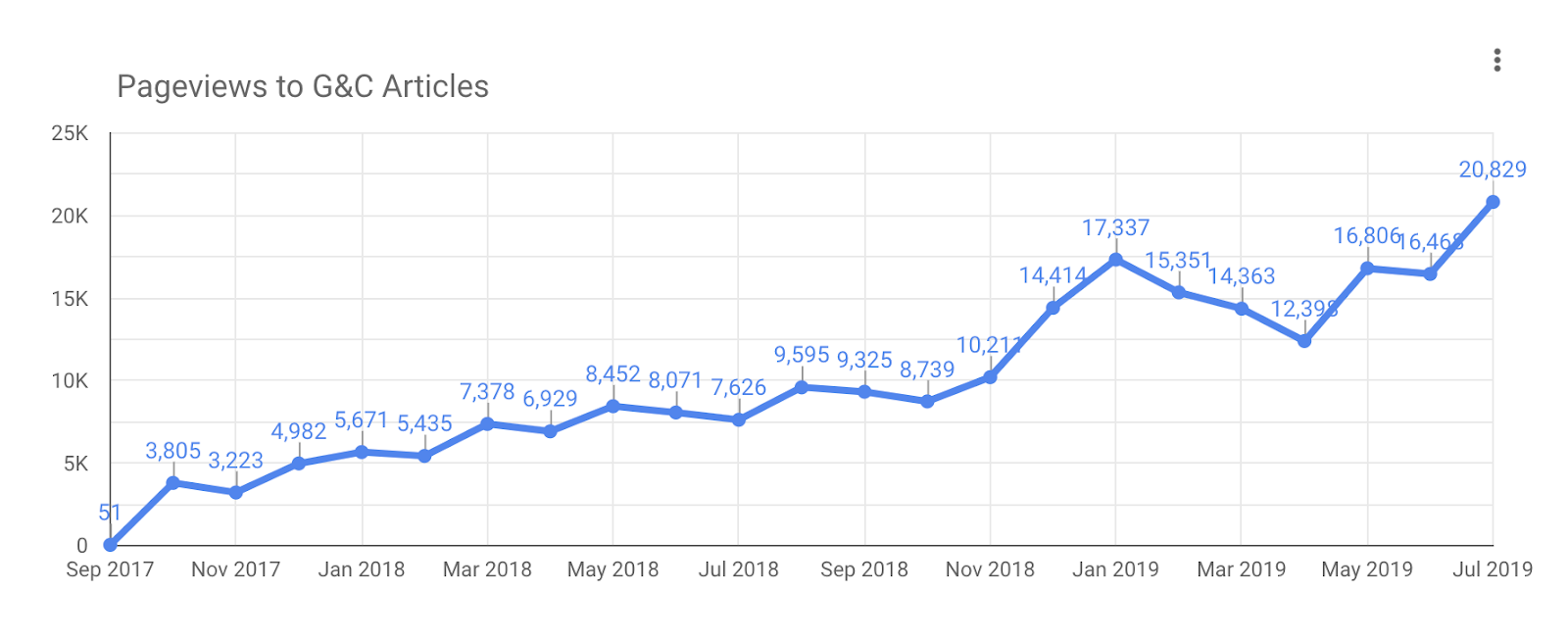
And then here’s organic pageviews in the same time period:
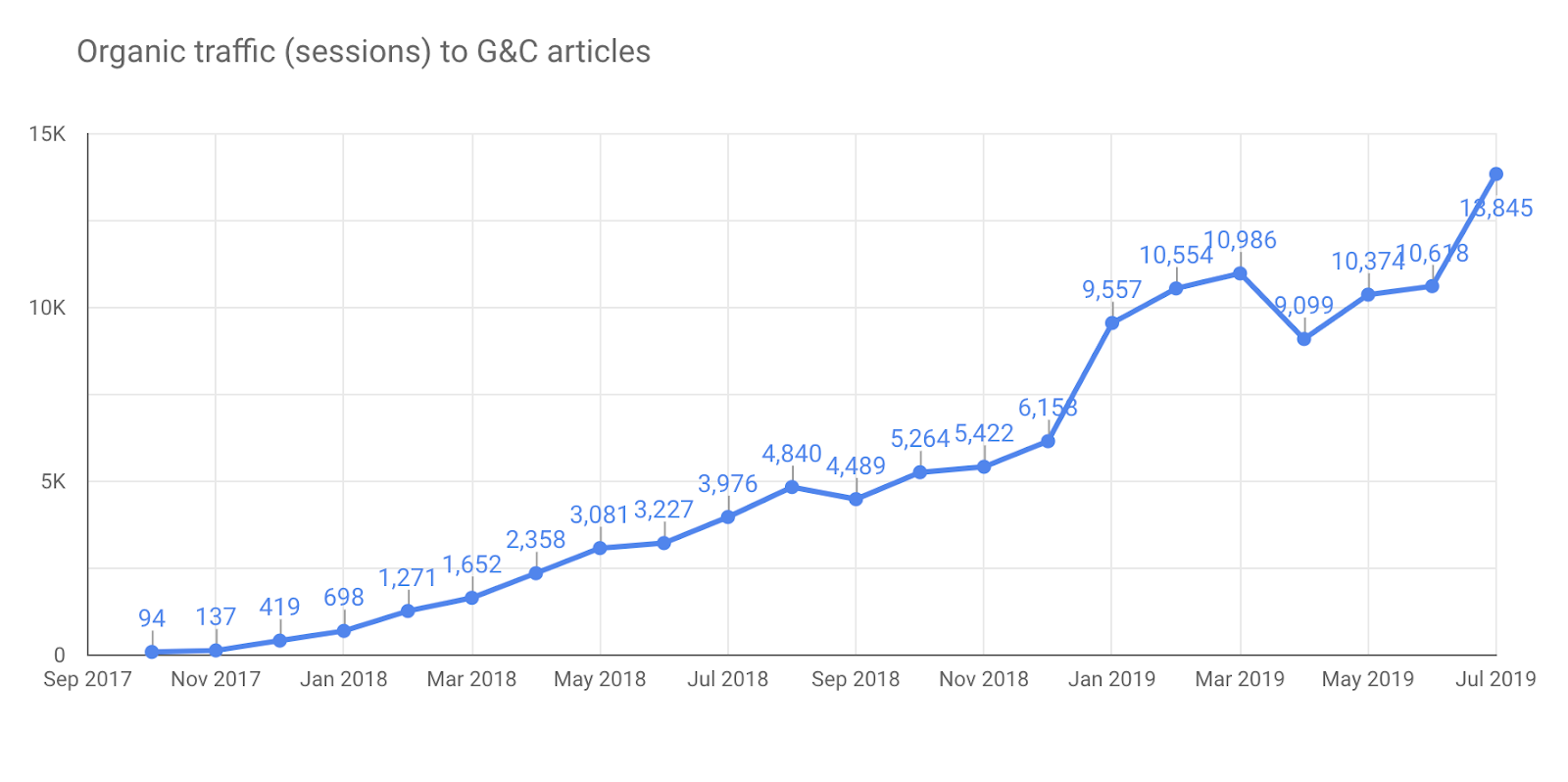
Look at the ratio of organic traffic to total traffic over time. In March 2018, it’s 1,652 Organic sessions on 7,378 total pageviews, that’s 22%. But in the last month on these graphs (July 2019) we see 13,845 organic sessions on 20,829 total pageviews, for a ratio of 66%!
In terms of SEO strategy, you may think that after two years of content marketing organic traffic should be much higher than ~14k/month. Yes — there are a lot of other case studies that show traffic increasing much faster than what we’ve done here. But the reason why we don’t have massive increases in traffic is because our focus has been to increase signups, not go after head keywords that drive tons of traffic and produce little to no signups.
A Look at Conversions
For this company, we have to measure conversions out of a spreadsheet since they have so much traffic that GA samples their data.
That said, we’ve been measuring conversions volume since the beginning of the engagement and have seen a fairly linear increase now crossing over 150 signups/month.
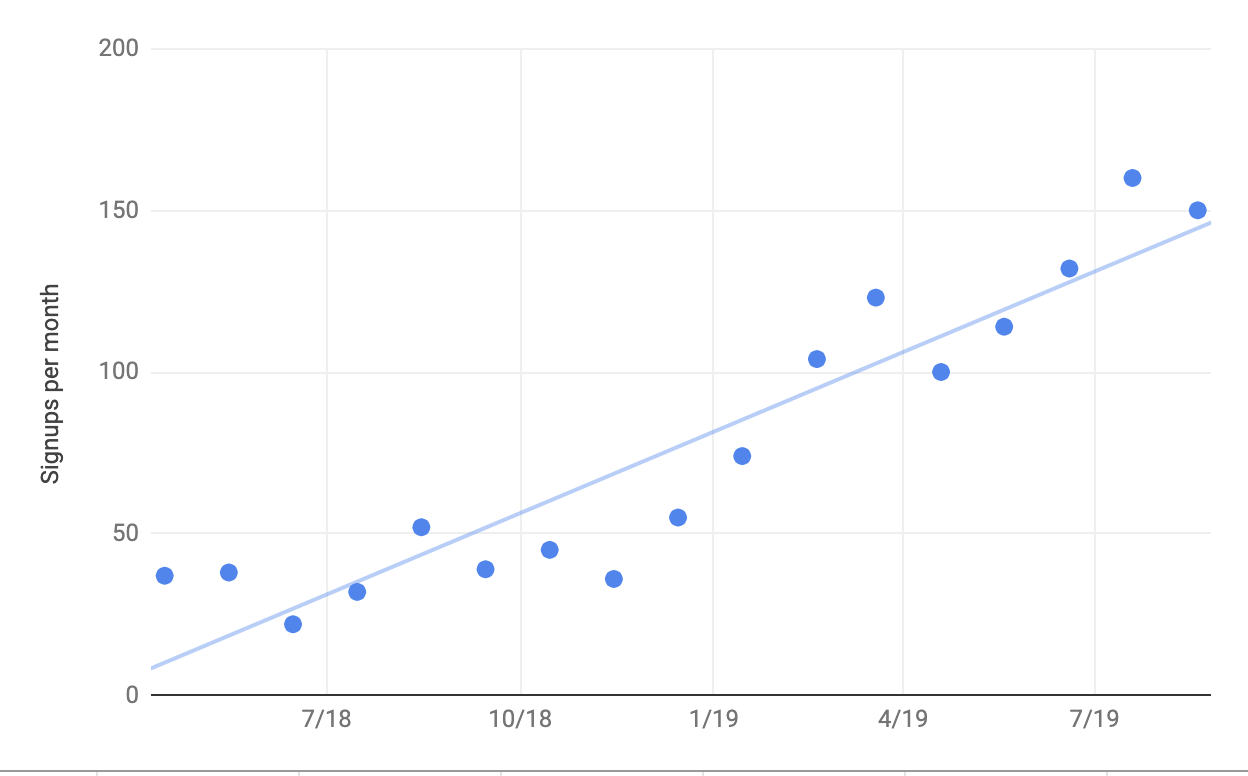
Again, I want to drive home the point that many in-house content marketers and agencies chase traffic volume, however, more traffic does not mean more conversions. In this post on content ideation, I shared that “The biggest determinant of whether a blog post will convert is not the call-to-action (CTA) that you place inside of a post, but rather the idea behind the blog post itself.”
This graph proves that point. The strategy we’ve been using has been to identify high-intent keywords to target. We don’t care whether they show ‘0’ volume in any SEO tool, or whether they show ‘100’, or ‘1,000’ traffic potential. What we care about is owning keyword terms that would be likely to convert.
Hence, we don’t only chase traffic, we chase ideas and create quality content that we think will convert. Since working with this company, we’ve been able to increase the conversion rate from our blog posts from a little over 0.2% conversion rate, to now right under 0.8% — a 300% increase in conversion rate. This wasn’t through content upgrades or A/B testing lead magnets, button colors, or some other “hack”, it was just through focusing on the right content strategy of using pain point SEO.
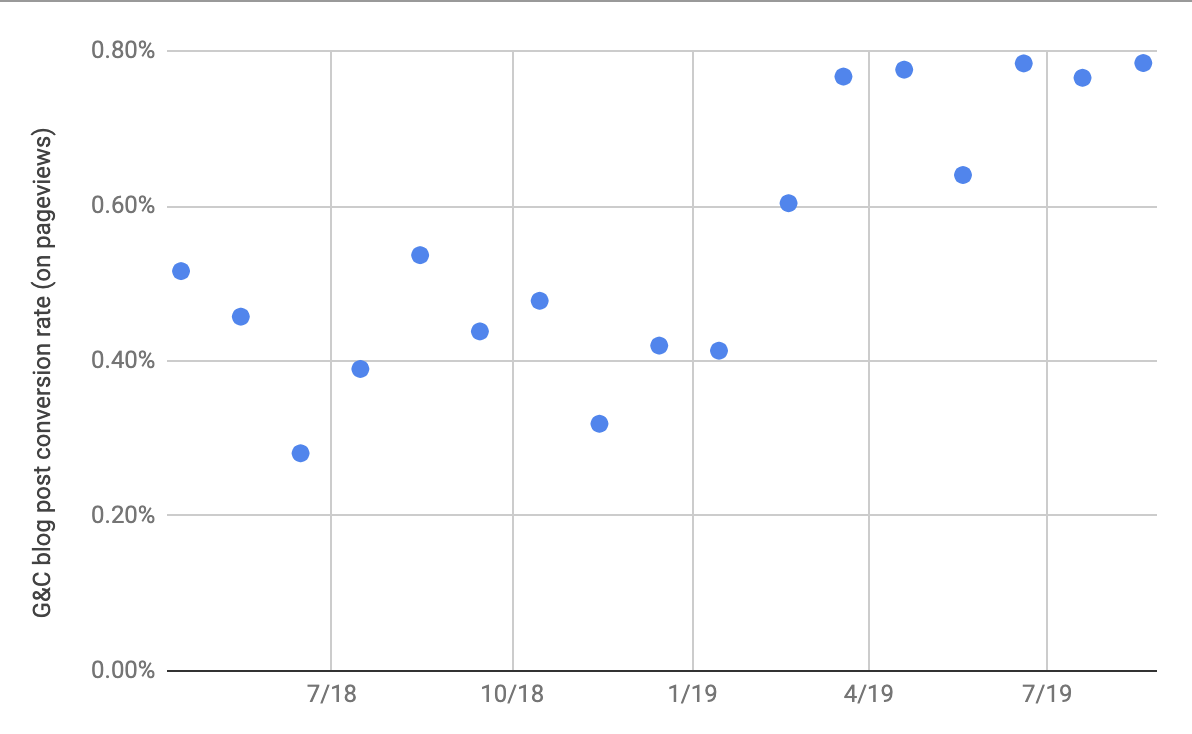
What You Should Takeaway from This Post About How Long It Takes to See Results from Content Marketing
As you can see from the various case studies we shared, every company gets different results. In the beginning of doing content marketing, you should be looking for indications that your strategy is working by seeing a few conversions coming in — and then over time, you should be looking to compete with yourself on a monthly basis to see traffic and conversions increasing.
Interested in having us do content marketing for you? Work with us.
If you learned something new from our blog post, then you’ll love our course. We teach our entire content marketing process that we use for our clients and ourself. It’s all shared through written posts and video screen shares and tear downs. Learn more about our course here or watch our video walkthrough.







